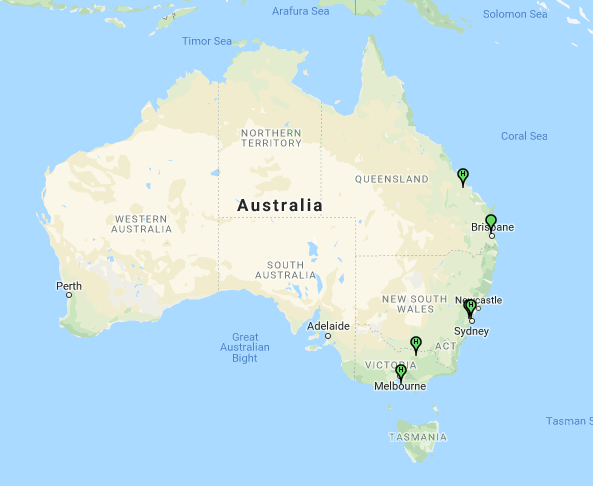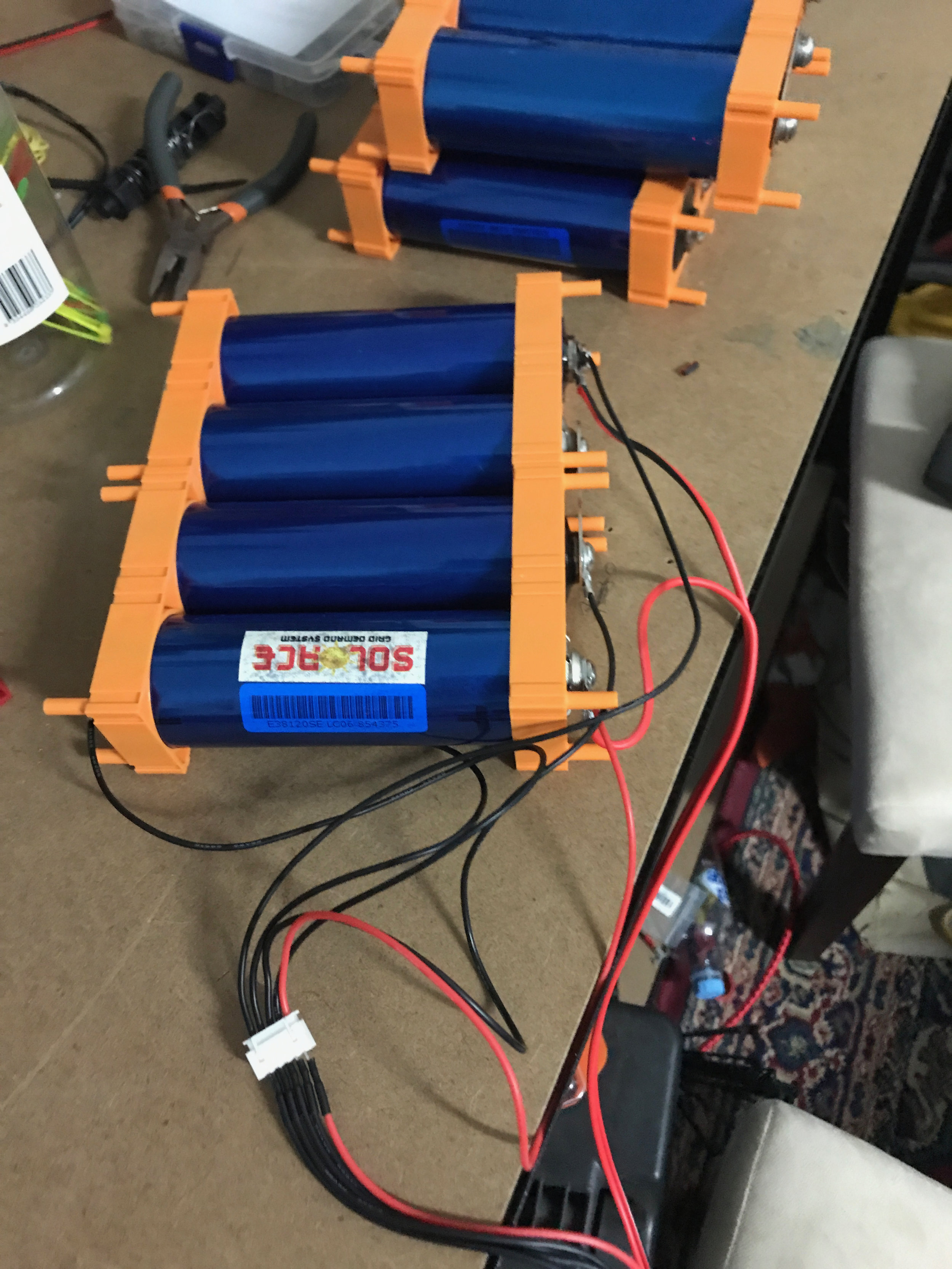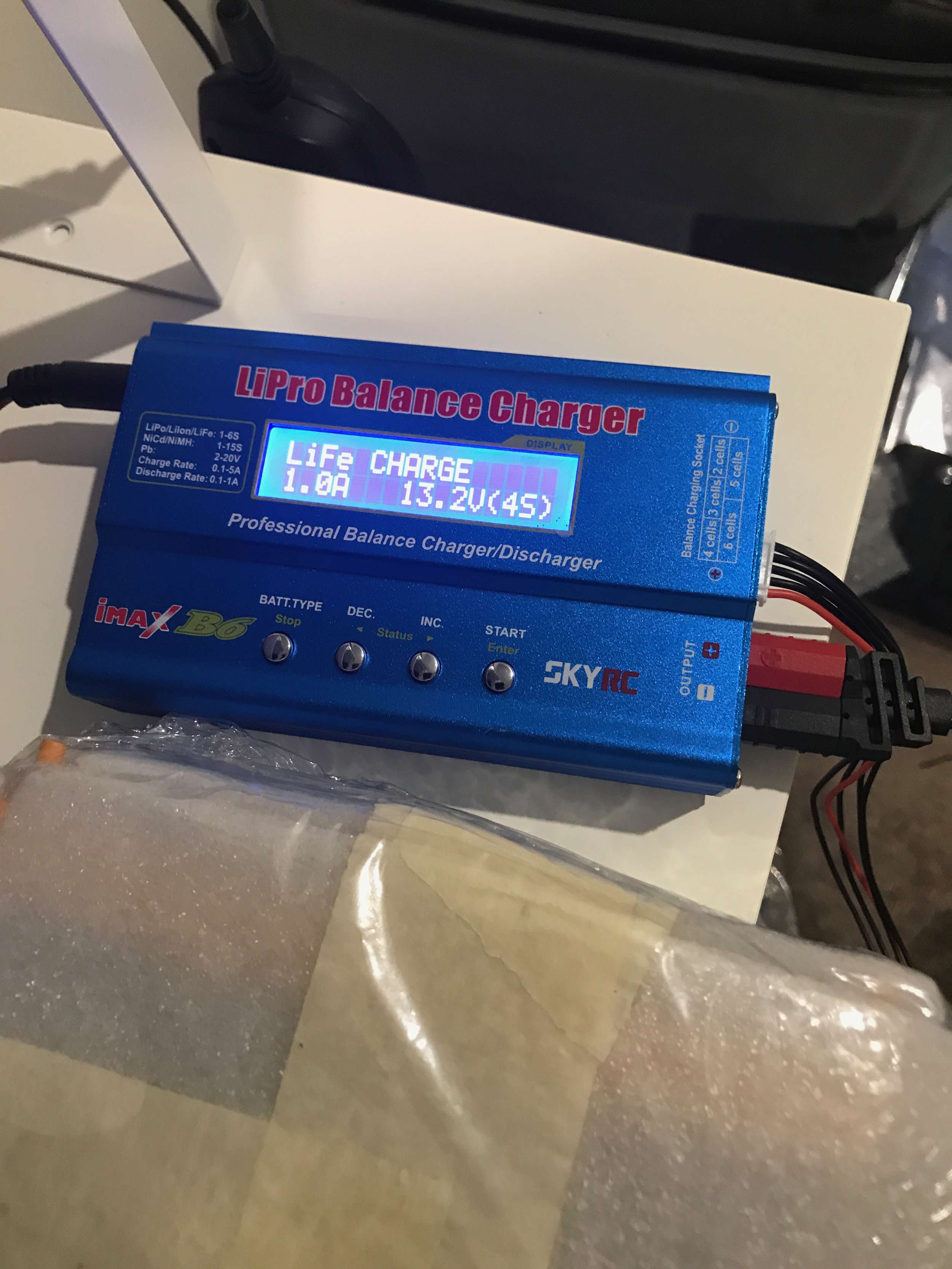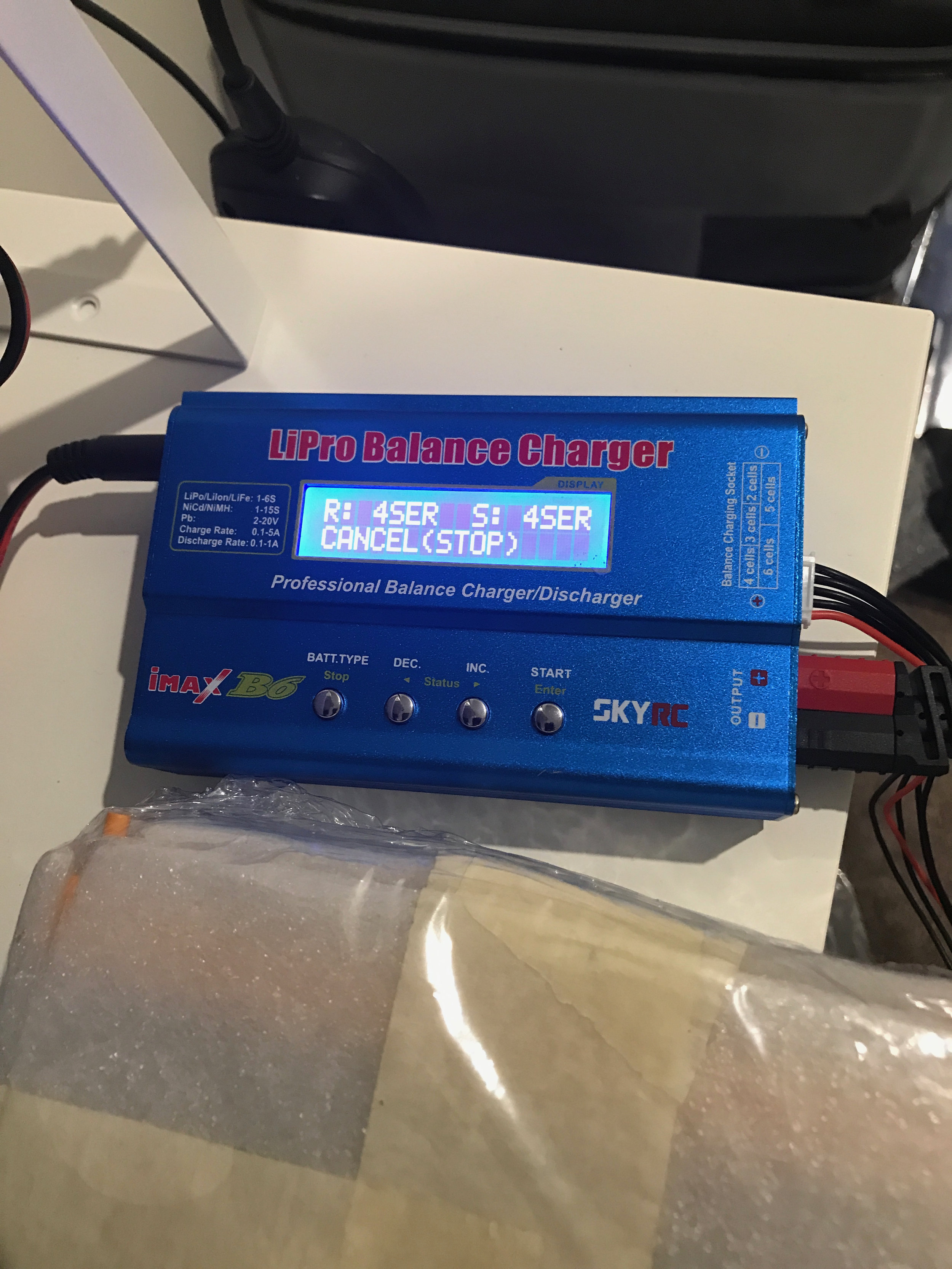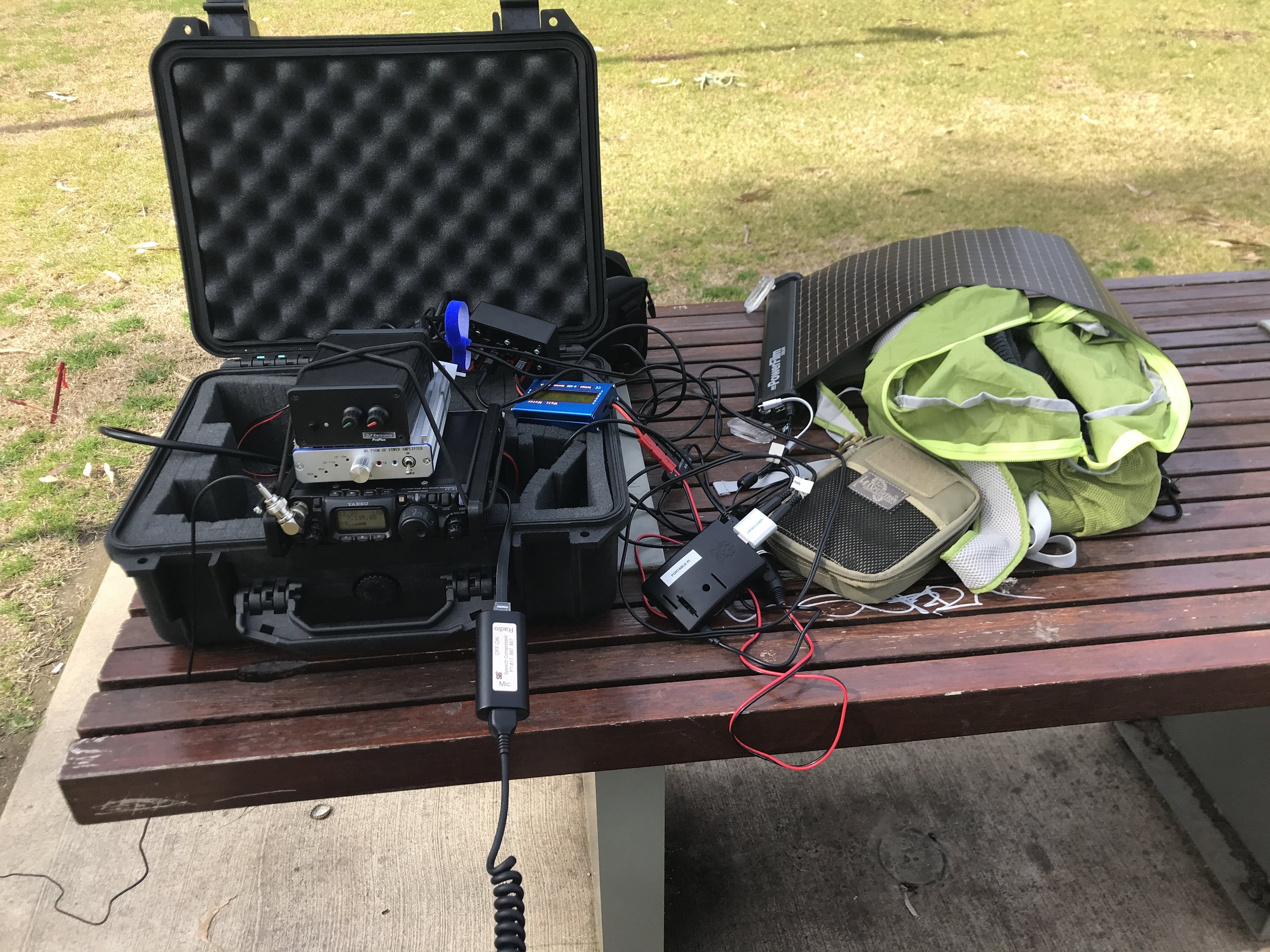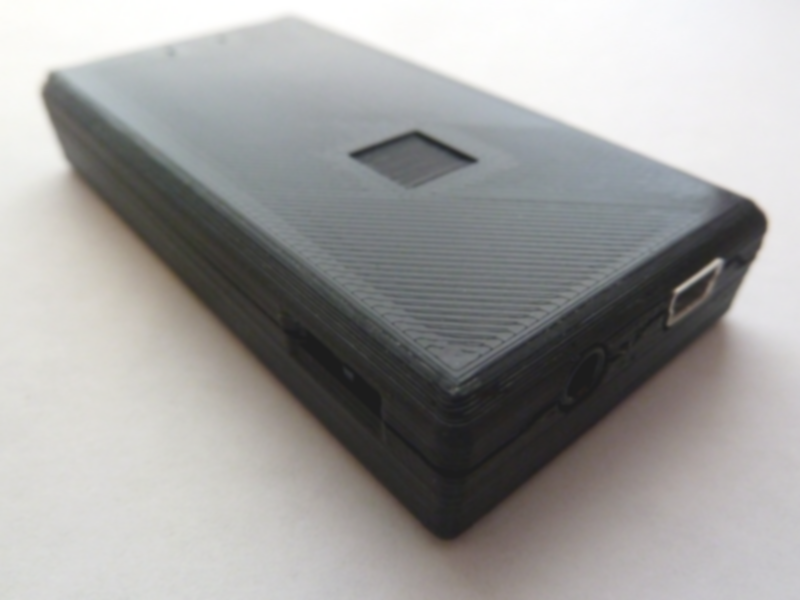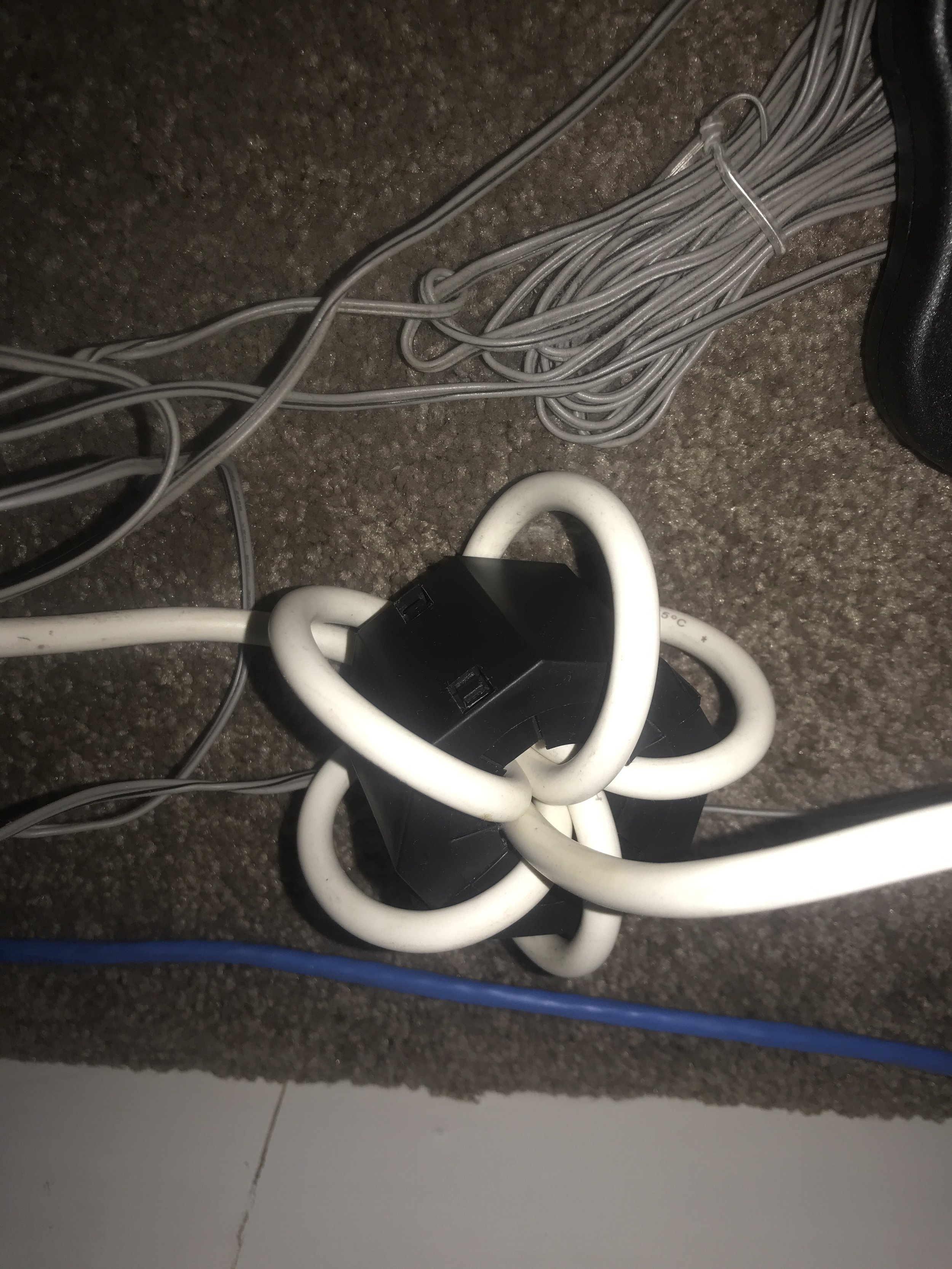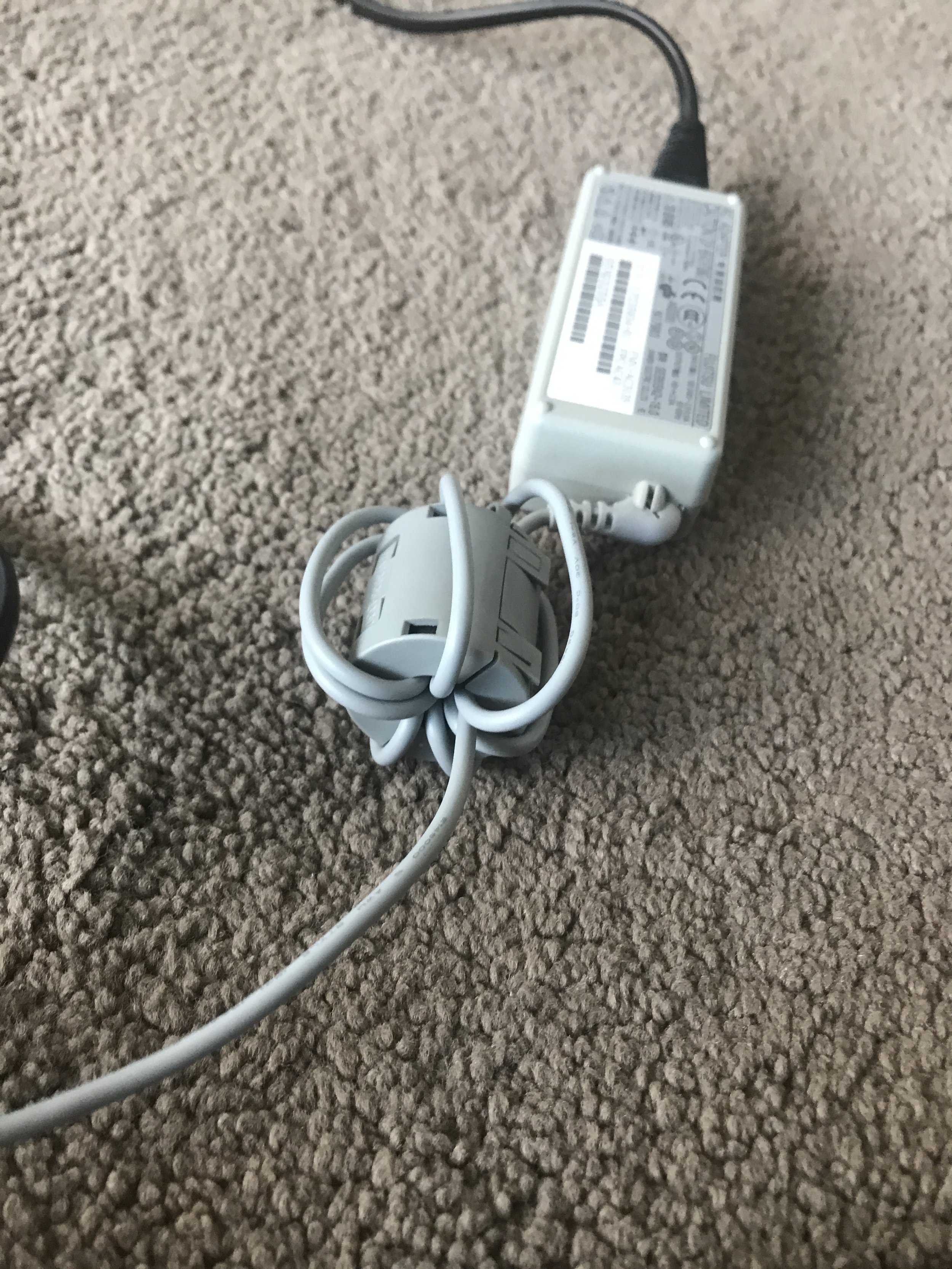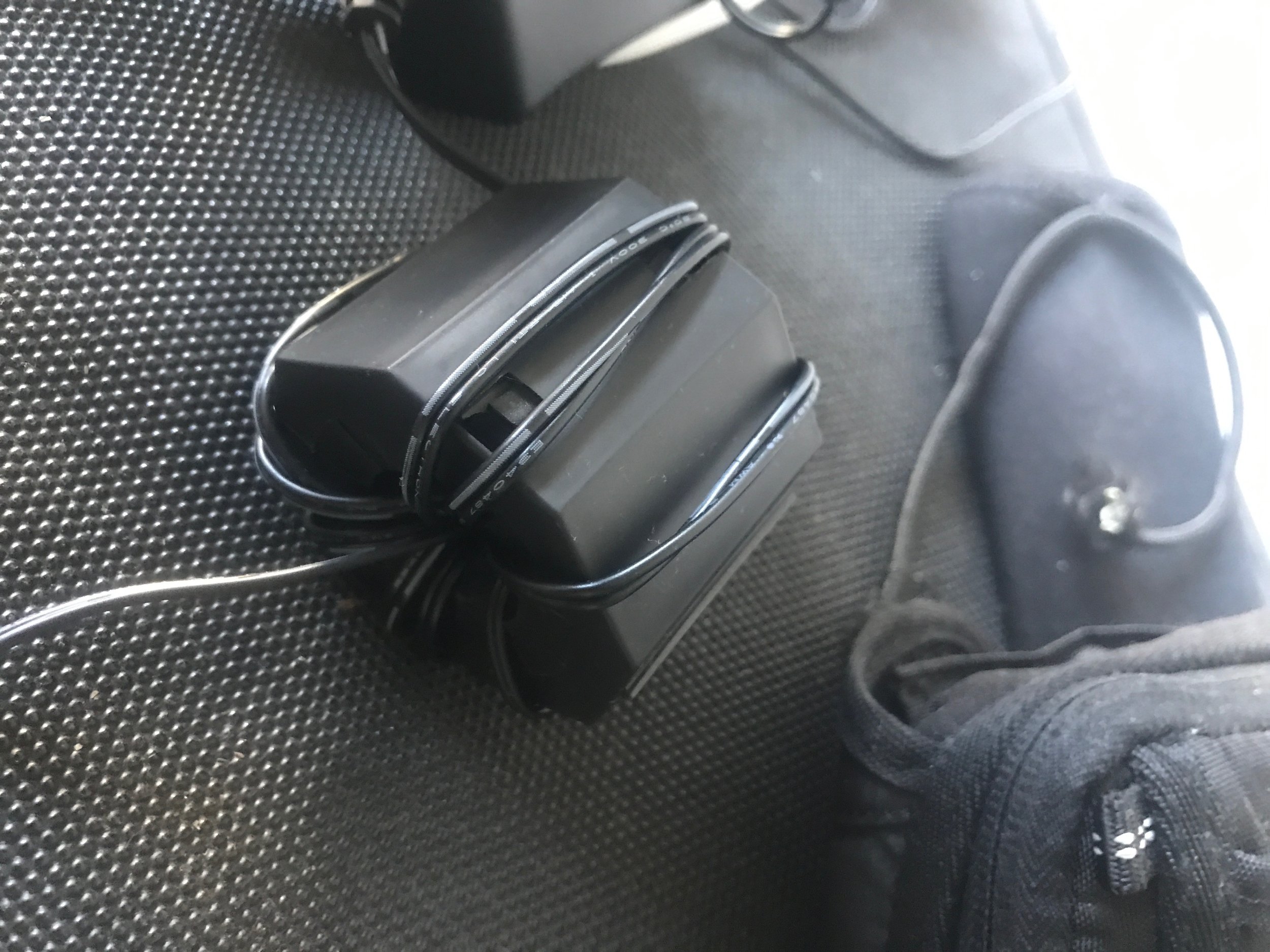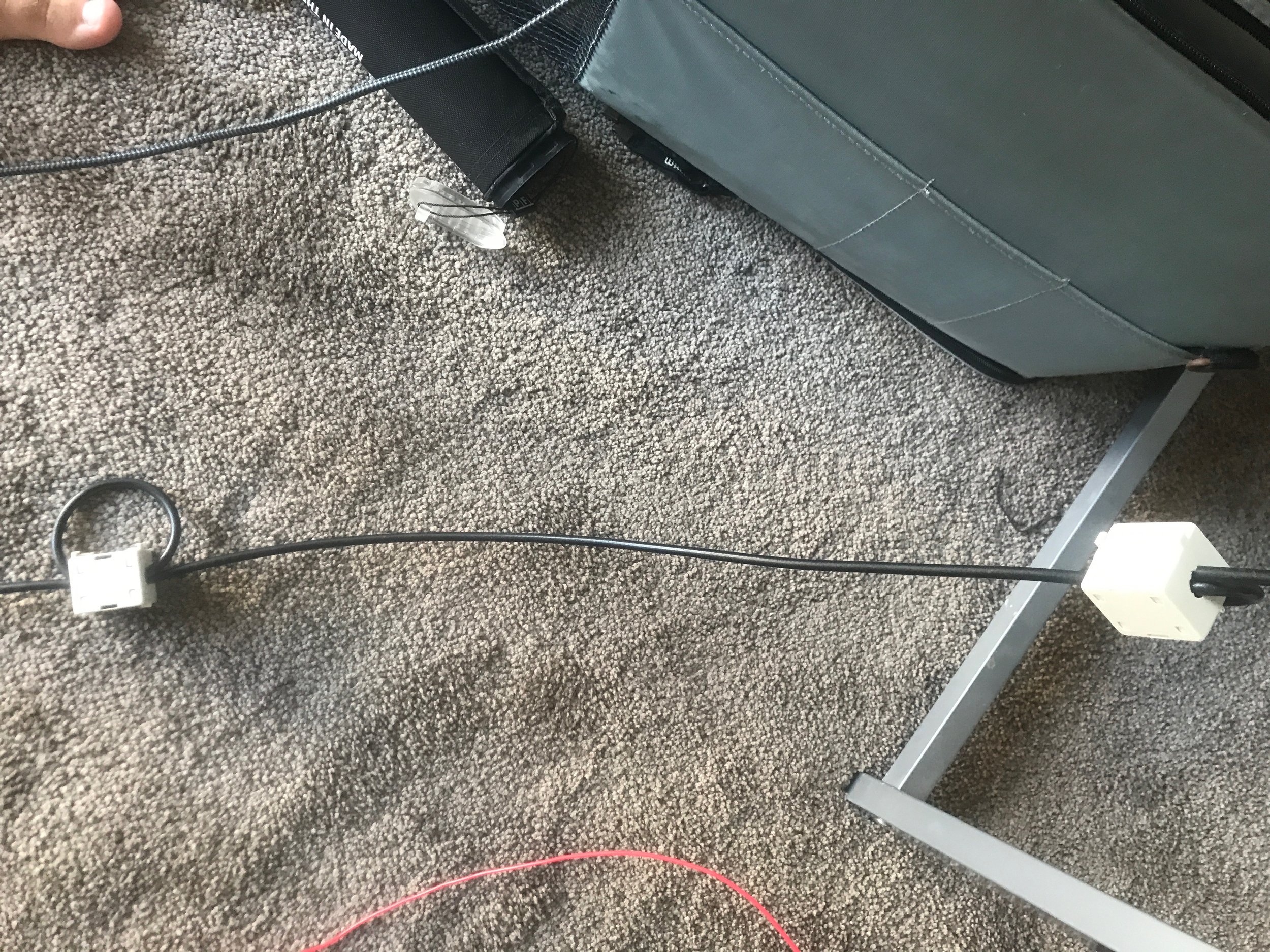Feeling the need to summit some more hills!
/As winter starts to slowly release its grip on Canberra, I used the VK1 Sota Winter day of action to get out on one of Canberra’s iconic summits - Black Mountain.
Check the video
A VHF Winlink Gateway - using a Raspberry Pi Zero W and Direwolf
/Ever since I upgraded my amateur radio licence to the Standard level which allows the use of “Data” modes, I have been interested in the Winlink collection of protocols. Winlink allows the transfer of text based emails from RF to the wider internet. Connection us bunch of strange radio folks to the wider world. Winlink is used by sailors and those off the beaten track the world over.
Stations reporting their locations via Winlink. Take specific note of those that are well off the beaten path incl in the middle of the ocean
In the US it is very very common to have VHF Winlink gateway stations at the county level, with at least one covering most regions. The VHF side generally uses 1200 baud and has a range of around 50-100 kms. However in Australia VHF Winlink is very rare. Below is a map showing VHF stations in Australia. As you can see there are very few.
Australian VHF Winlink nodes
More common in Australia is the use of HF with the below map showing HF nodes across Australia. Although unlike VHF @1200 Baud, HF is at the slower 300 baud.
Australian HF ARDOp stations
I turned my mind to created a VHF Winlink gateway with the Raspberry Pi and the ex-Taxi Radio Tait 8110. Using the similar set up to the 25w ARPS station I have set up at home.
it might look a little messy in the above image but what it is is a raspberry pi zero w, an audio board and an easy digi interface to handle the Pi using its GPIO to control the PTT of the radio. Currently works very well.
While I don’t plan to write a step by step on how to do it- I will post 2 links that really really helped me.
http://www.cantab.net/users/john.wiseman/Documents/LinBPQ_RMSGateway.html
https://packet-radio.net/installing-direwolf-and-linbpq-on-raspian-stretch/
Let me know if you do get one on their air!
DIY 10ah 4s LifePo4 without a BMS V1.1
/DIY 10ah 4s LifePo4 without a BMS V1.1
I had been toying with the idea of more power - either for longer operations or more power or even more devices which such as portable digital operations.
I could have gone the simple Zippy 8400mah blue brick that seems the next step up from my 4200 or.. there is the homebrew route.
Using headway 38120 lifepo 4 cells that are used in E-bikes, and some simple balance extension leads I made Big Bertha v1. 10AH 13.2v. This version does not have a Battery Management System (BMS) and for all intents and purposes, it is seen by balance chargers and even the little cell monitoring beepers that many use, like a big 4s pack.
Photo captions:
8486 - a partially built 4 cell pack comparing size with a 4200 zippy
8532 - I might have snapped up another 2x 4 cell lot on ebay that a company was getting rid of. The orange holders snap together giving the cells rigitiy
8577 - sitting on the bench testing connection to the balance charger - I took extension leads, clipped the socket end off and soldered ring terminals to the ends and connected to the negative of each cell, with one being positive - just the same as the zippy packs
8578 - v1 covered in packing foam, covered in light head shrink bags (x3)
8580 - testing my other balance charger to confirm 12v charging.
Possible improvements - increase the current handling of the load/charging cable for possible QRO operation of the 857.
Coming versions might will likely have a BMS going forward to auto cut off on low voltage.
Shopping list:
Cells, cell holders, bus bars : https://www.evworks.com.au/
The rest was either junk box or ebay
Portable Pi update - new capabilities!
/I have just got back from a week long drive throughout NSW, I even managed to squeeze in some radio play.
Recently as part of a SOTA demo, I pulled the Portable Pi set up out to also show it off. To my horror I discovered the 12v to 5v step down that powers my pi was NOISY - like s5-s7 in the relative radio silence of a SOTA summit.
Additionally, there is a quirk of the Samsung Galaxy A Tab forms a central component of the portable kit, it needs a very defined voltage to charge while turned on. 2 birds with one stone! The powerworx Anderson power pole to 2 female USB (3A) - they are SILENT, it's amazing.
So while the picture below looks like a MESS, it was taken after I did some troubleshooting (no audio, had the mic and the audio cable around the wrong way - DUH)
Below is my 817ND, Raspberry Pi3, USB GPS, ZLP Audio interface, 40w Amp (not used in this project...yet), Light Saver Max Solar & Lithium power pack, SOTA Beams Voice Compressor and the hub of the whole operation is the SOTA Beams Anderson PowerPoles distrobution box.
So with the hardware sorted, some new capabilities have been added. HF APRS using FSK on 40m (below was one location packet from the testing location). While 30m is the normal HF APRS band, that band is restricted to the highest license level in Australia so there is a small community using 40M here.
Also added recently was the super new mode of FT8CALL, the FT8 speed but actual keyboard contacts on HF bands. I managed to have 2 with the West Coast USA as well as Philippines.
Check out the new mode on the video below
APRS - my 2 options for Man Portable
/I spend a lot of time when I am ‘playing radio’ in places that have little to no mobile phone service. This is both a blessing and a curse. It means that it likely means I am in an RF quiet environment from 3-30mhz on HF, however should I want to tell my non radio friends that I am running late but not to worry, or I want to check what repeaters are around me - then I am out of luck.
There is a data mode called Automatic Packet Reporting System (APRS) - when it was created it was designed as a ‘intelligence gathering tool’. If you were plonked in another city with only your radio and a Terminal Node Controller (TNC), within 10min or so you could gather all you needed, from repeater information, local radio nets and know how to contact nearby stations in simplex as well as send 2 way short text messages. As time has gone on it has sadly fallen away to mostly be seen as a tracking device, showing where different stations are.
Just some of the fun things OTHER THAN TRACKING that I have found out is possible.
Spend spots for SOTA Activations by APRS Messages https://www.sotaspots.co.uk/
Check and send emails via APRS https://www.winlink.org/APRSLink
How do I use APRS when I am portable?
I always carry a small Android Tablet with me when I am operating portable for logging or using the raspberry pi for digital modes (http://wadeabout.com/blog/portablepi-a-raspberrypi-for-amateur-radio-portable-opers) so since I am carrying the tablet it makes sense to use APRSDroid app. I connect a tiny match box sized Bluetooth TNC from http://www.mobilinkd.com/ - I have connection cables for all of my radios - my Yaesu FT60R (my primary HT), my back up HT a Baufeng UV5R, and a cable for my FT817ND which all allow connection to the Mobilinkd 2.
This allows me to send location data, receive repeater information, and send 2 way text messages.
Recently I picked up a 1w APRS Radio with built in thermometer and GPS. Essentially is a fully self contained APRS unit.
https://www.aliexpress.com/item/AP510-APRS-Tracker-VHF-with-GPS-Bluetooth-Thermometer-TF-Card-Support-APRSdroid-KISS-Model/32392912633.html it also has bluetooth inside so like the mobilinkd it can be used with the android tablet for 2 way communication, however in stand alone mode it beeps out location data based on your speed and recent movements so to not jam up the single APRS frequency. I had read online that many spoke negatively about its meger 1 watt. I have not found an issue in residential Canberra. (VK1)
A look at a recent trip around the suburbs of Canberra. NB I am using an external Mag Mount antenna in the car.
A zoomed out view of the stations that either digipeated or igated my 1w packets.
If you are still asking what is APRS? Here is a video by the guy who invented it:
2021 EDIT: New radio - Chinese HT with APRS http://wadeabout.com/blog/new-toy-lanchonlh-hg-uv98-arps-vuhf-ht
Update from my initial testing of using a Raspberry Pi 3 as a portable option for amateur radio digital modes.
/Update from my initial testing of using a Raspberry Pi 3 as a portable option for amateur radio digital modes.
See my intial build here : http://wadeabout.com/blog/portablepi-a-raspberrypi-for-amateur-radio-portable-opers
My first use of it ‘in anger’ during the VK QRP 80m ‘Hours contest’ http://wadeabout.com/blog/80m-hours-contest
Thoughts so far:
CQRLOG:
Shite and will not be used. It is initially installs and looks very promising giving details about the DXCC and the operator once the callsign is entered regardless if you have worked before or not. However each time it is connected to the internet it wants to update its base look up files, not a problem, however once installed it changes the permissions in the underlying database and locks me out.
Winklink, PAT and mobile / portable email
I have managed to get ARDOP working with PAT - however due to propagation I have not actually got a HF Winlink / ARDOP connection to work. There are only 2-3 gateways located in Melbourne (VK3) and Sydney (VK2), depending on the day. I am located smack between them in suburbia (VK1). There are very few VHF gateways in Australia in the order of 2 or 3.
FT8 / WSPR
I have managed to use both these modes quiet easily from the raspberry pi, in its ‘headless’ mode connecting via VNC to the raspberry pi from it’s self-initiated wifi hotspot - made from the details here:
http://www.raspberryconnect.com/network/item/315-rpi3-auto-wifi-hotspot-if-no-internet
Another weekend, another antenna to build! -HWEF
/The sun was shining so I decided to head down to the local sporting oval to finish off my linked 40/20m EFHW wire antenna using QRPguys EFHW tuner kit that I built last year.
Here is the video:
80m "Hours" Contest
/I headed off to a local sporting oval to set up a 1/2 wave inverted v for 80m to work the VK QRP contest - the first hour is digital or CW and the second is ssb.
This was a good test of the Portable Rasberry Pi used for digital modes.
Digital was a little slow with only 2 contacts in the hour on 80m, however SSB seemed to heat up with a 900km contact into VK4.
Check out the video below.
PortablePi - A RaspberryPi for Amateur radio Portable Operators
/This project might be of interest to some SOTA operators.
I wanted to see if I could make a field companion Raspberry Pi for Data modes - I would never lug my laptop into the bush.
Hardware:
- raspberry pi 3 with inbuilt wifi chip
- USB GPS dongle
- USB sound card
- ZLP USB radio interface
Capability:
- WSJT-X on RC1.9 for FT8 etc
- Fldigi
- Winlink using PAT - telnet only at this stage
- APRS via Xastir and Direwolf
- Logging using CQRLog - issues with database - working on that
- GPS updates onboard time - needed for Data modes and logging as well as GPS for APRS
How do you use it?
Well when the Pi is near a wifi network it knows it connects when it is not - say on your favourite summit - it creates a hotspot allowing headless control by any VNC device - tablet, phone etc.
Some pictures:
Set on top of my 817
Connected over VNC
Update: June 2018: http://wadeabout.com/blog/update-from-my-initial-testing-of-using-a-raspberry-pi-3-as-a-portable-option-for-amateur-radio-digital-modes
Wade
VK1MIC
Pre-planning document for Solo MultiDay, Multi Summit Hike - Easter Long weekend
/This is a live document and will update up until the depature date.
When: at this stage, I am looking at around Easter long weekend. 31 March - 01 April.
Bands: 40M, 20M, 2M FM.
Antennas: HomeBrew 10,15,20,40M linked inverted v dipole, 2m & 70cm Slim Jim rollup, Nagoya NA 771 2m & 70cm whip.
Rigs: FT817ND all band all mode 5W QRP & FT60R 5w 2m & 70cm FM HT.
Power: 17,000mAh Powerfilm Solar, Light Saver Max, with 27w integrated solar panel, 12v out, 2 USB out.
Duration: 3 days, 2 nights, I plan to walk to Murrays Gap, set up base camp and then day hike it to each of the summits. This places me semi close to 3 freshwater streams as well as easy access to trails leading to the summits.
Distance: total round trip is 25km over 3 days.
Non SOTA Comms Plan:I am working on the assumption of zero mobile phone comms, I will have Optus and Telstra with me. I am thinking I should have ok voice to Mt Ginini 2M Repeater (146.950FM -600khz split, 91.5 CTCSS tone) from the lower valley, additionally, I will have my little APRS TNC (MOBILINKD http://www.mobilinkd.com/) that I can use for APRS spotting APRS messages, and occasionally tracking.
Day by day plan:
- Departing Canberra on Good Friday, March 31 driving south via Adaminaby NSW to the trailhead, walk into the Murray’s Gap Campsite set up camp,
- Day hike to Mt Bimberi VK1/AC-001 Summit (1913m), activate, return to base camp, camp overnight
- Day hike to Mt Murray VK1/AC-003 (1845m) activate, return to base camp, pack up, hike out to carpark, return to Canberra Sunday 01 April.
Google earth planned track: https://www.dropbox.com/sh/86q7gjmeqrvagtm/AAA-ENBUFm3QhOEb8nGSISBDa?dl=0
To Do list:
Sort gear, repack and re-weigh everything to trim grams.
wheel alignment on the vehicle
QTH RF NOISE QUIETING MISSION
/My home location is nestled in a townhouse complex in Franklin, in Canberra’s northeast.
My HF antenna is a random wire from my entrance up to the balcony and back down. Best described as an end fed inverted v. It will tune on all usable vk hf bands. Home rig is my only rig. 817nd, z817 auto tuner. Shown here:
As with all modern urban environments, there is RF Noise everywhere. While I accept I can not control what RF noise my neighbours make, I wanted to take control of my noise which ranged from S9+ to S7 on a quiet day at home.
The following are the steps I took that now has my noise floor ranging from zero ( I keep checking that the antenna is connected) to about s2-3 which is my common QTH band.
Step one: If it isn't hidden in a wall it was checked with an AM radio - I wandered around the house poking behind TVs, bedside tables, shack / study, garage and laundry.
Result: 2 largest noise emitters so far - old xp shack laptop charger (6s points on its own) and then the cumulative powerboard of shite that lives behind the TV made up of about 6 wall warts that power TV, DVD, surround sound etc.
Next, I turned everything off at the meter box and worked circuit by circuit running backwards and forwards to my radio to see the noise floor change.
Because I have the 817 ready to rig for SOTA or /p work I ran it off the battery and was blown away when I connected it to the wall charger I use to top off the internal battery… s7 alone!
Armed with these facts I set about OPERATION RF QUIETING.
AKA: ferrite the crap out of everything. I spent about 60 AUD on 3 large high-grade snap-on ferrites from the US, plus about another 20 on smaller ones from Jaycar.
Deployed as follows:
1 large around the washing machine’s power cable, when in use it generated a rhythmic hum across all bands - not any longer
1 large on the power cable for the TV power board
1 large on the Yaesu power cable
2 x medium on antenna feed coax (-2S points)
1 x medium on the XP Laptop charging cable - about 7 turns got it down to less than 1 s point from 6
The hunt is still not over, with any noise detected on the radio eliciting a ‘WHAT DID YOU JUST TURN ON” shout from the shack to my accommodating XYM, I am pleased to report the answer is always “nothing” meaning it was external to the house.
References:
https://www.youtube.com/watch?v=LuMlM8zWQFk&feature=youtu.be
https://au.mouser.com/ProductDetail/Fair-Rite/0431177081?qs=KmHvPbTOE4RJzgtUylmsjQ%3d%3d - ignore the sales picture these are large
Call sign upgrade
/As part of my desire to use portable and low power (QRP) digital modes and APRS I needed to upgrade my Foundation (aka F Call) license to a Standard licence.
I undertook my testing in mid February 2018 and passed (surprised myself) on 1 March my new callsign became active - VK1MIC. Within hours I was out on a summit using my new access privileges to the microwave bands as well as 20m.
Communications support to Canberra's Ralleys De Femme
/WICEN is a community volunteer organisation focused on the provision of emergency communication support from the Australian Amateur Radio Community. As part of keeping skills current as well as equipment and procedures familiar, they provide communications support an operations to community events, the latest such event for the ACT was a car rally.
My role on the fay was as a rally mid state safety checkpoint called an SOS point. I operated my standard Yaesu FT60R on VHF FM as well as the commercial VHF set from Rally Control. I marked off and called in their rough passing time checking that they has passed through the first stage safely.
Check out a video I made on the day.
Cheers Wade
PowerFilm LightSaver Max
/PowerFilm LightSaver Max - a rollable solar lithium battery
Stats:
18000 mAh
2x 2.5A USB
12v max 5A
Rollable solar panel
Solar charge 6-8 Hours
Wall charge (USB-C) 3 hours
My desired use:
Directly connect the LightSaver Max (LSM) to my Yaesu FT817ND for extended portable Amateur Radio operations, additionally allow charging of my mobile phone, my 7in android tablet used for logging in the field along with assorted miscellaneous charging such as GoPro for recording, my headlamp for night operations etc.
During the day time I would like to see if the, when unrolled and placed in the sun, will the solar panel pass an increased voltage spike along to the radio. Based on the provided specifications from the suppliers, the following use times are calculated:
LSM contains an 18000mAh battery that would allow
Yaesu 817ND
TX 2000mAh 9 hours total transmitting
RX 450mAh 40 hours total receiving
Charging
iPhone 2900mAh 6 times from 0-100%
Tablet 3450mAh 5 times from 0-100%
Please note these are not combined or simultaneous use calculation but individual single item calculations.
Conclusion: as per the video the LSM performed brilliantly. Delivering a smooth quiet 12.2v for over 2 hours of use, plus charged my phone and tablet to get the battery down to 6/10.
SOTA UTC New Years's Party - new sumit to summit record
/The UTC New Year's Midnight and the hour or so either side of midnight are as close to SOTA Christmas as you can come. Due to SOTA rules, an activator can claim summit actiation points once in a UTC year, ie 0000 01 Jan - 2359 31 Dec UTC, Locally that happens at 11am 01 January here in VK1 - so effectively you can claim double points if yu activate a summit before and after UTC Midnight! Accordingly there were a lot off VK SOTA activaors out on the recent UTC NY. I selected a easy to access summit, Mt Stromlo for my activation. I was out early and made 3 contacts on my VHF HT prior to even leaving the carpark at around 0930L (2230UTC), I set up in the usual location and made a decent number of contacts with activators and chasers to call Stromlo well and truely smashed. I worked a lot more than usual on 15m SSB HF than usual but watching the spots on my phone and reacting fast was the winning strategy for the day. I even managed S2S DX contacts with ZL1BYZ John and ZL2AJ Warren
As you can see below (red being Summit to Summit, Blue Chasers) It was rather the day for it, quickly filling my log. In total I made 77 contacts, 41 were Summit to Summit alone.
The Video is here:
SOTA: 3 8 Point Summits, 2 Andrews and a day out 4WDing
/Being the owner of a lovely little 2wd city car can be a little bit limiting in tackling some of the more remote or far-flung VK1 Summits.
Just before Christmas, 2 legends of VK1 and indeed VK SOTA were planning a sojourn to 2 8 point summits just over the border into VK2 in the hills surrounding VK1
Andrew VK1AD and Andrew VK1DA (yes, its is confusing doubly) offered a seat in the 4WD on the trip, and I jumped at the chance.
1AD was testing and comparing 2 antennas he had made for 23cm (1200Mhz) operation while 1DA was concentrating on SSB HF contacts, I qualified on 70cm and 2MFM operations.
You can read more about 1AD’s 23cm work on his blog here https://vk1nam.wordpress.com
While 2 summits were planned, we were making a good time so another drive up 8 pointers was added to the plan. The second summit required a bit of bush bashing, the drive up nature of the 3rd was a relief.
Check out my video from the triple activation.
SOTA: Mount Gillamatong - with a nice fat black snake
/I had itchy feet again and wanted to get out to activate a summit a tiny bit further afield than VK1 easy walk ups, Mt Gillamatong near Braidwood in regional NSW seemed to fit the bill nicely.
A warm easy 1 hour drive east of Canberra and 10m from down town Braidwood - Gillamatong as looks rather imposing from the base. We approached from the west near the local water treatment facility. This apparently is not the way others have in the past, however is the easier of the East / West approach options.
Progress on the dirt track was momentarily halted by the appearance of a rather slippery character - a rather well fed Red Belly Black Snake quickly moved off in search of a less disturbed hideout and we passed on.
This is one of the few times my partner Frankie has joined me on SOTA activations. He is keen on the walking side but the sitting around while the radio bits are down
Activation side of things were only undertaken for an hour or so with no nibbles on 2m or 70cm sadly.
HF seemed to be ok with my regular bands of 40 and 15m yielding results.
Below is a video of the activation.




